Energy storage update
Domestic energy storage systems are becoming more popular as their prices come down and electricity prices go up. Lance Turner updates what’s happening in the market and what to look for.
The number of domestic renewable energy systems being installed with energy storage batteries has increased dramatically in the last couple of years. Figures from the Clean Energy Regulator show that there have been nearly 10,000 domestic solar systems installed with storage included at the time of installation, including over 2000 from the first half of 2018 (see Table 1). This does not include batteries added to existing PV systems where installation numbers have skyrocketed: in total over 20,000 battery systems were added in 2017, a huge jump on the 6750 systems added in 2016 (see the Climate Council’s report ‘Fully Charged: Renewables And Storage Powering Australia’). Also note that the Clean Energy Regulator’s numbers do not include those systems which have not yet had STCs claimed for them—the regulator allows up to a year for certificates to be claimed.
What’s changing in the market
The range of domestic-sized storage systems continues to change, with new systems appearing and some older systems becoming unavailable. There are systems ranging from a couple of kilowatt-hours, capable of running a few appliances for an hour or two, right up to systems with dozens of kilowatt-hours in capacity, capable of providing a full day of energy backup for the average suburban home.
As systems evolve, new features are added, with more advanced monitoring and connectivity, and even the capability to update system firmware ‘over the air’. A good example of this is the recent update to Tesla Powerwalls, which enabled these systems to check weather reports and fully charge the battery if there is a pending storm, so that maximum backup capacity is available in case of a blackout. We expect to see other manufacturers adding such capabilities to their systems in the near future.
Most systems are now designed to be ‘off-grid capable’: they can not only be used in off-grid systems, but are also capable of blackout backup for grid-connected homes in a suitably designed and configured system.
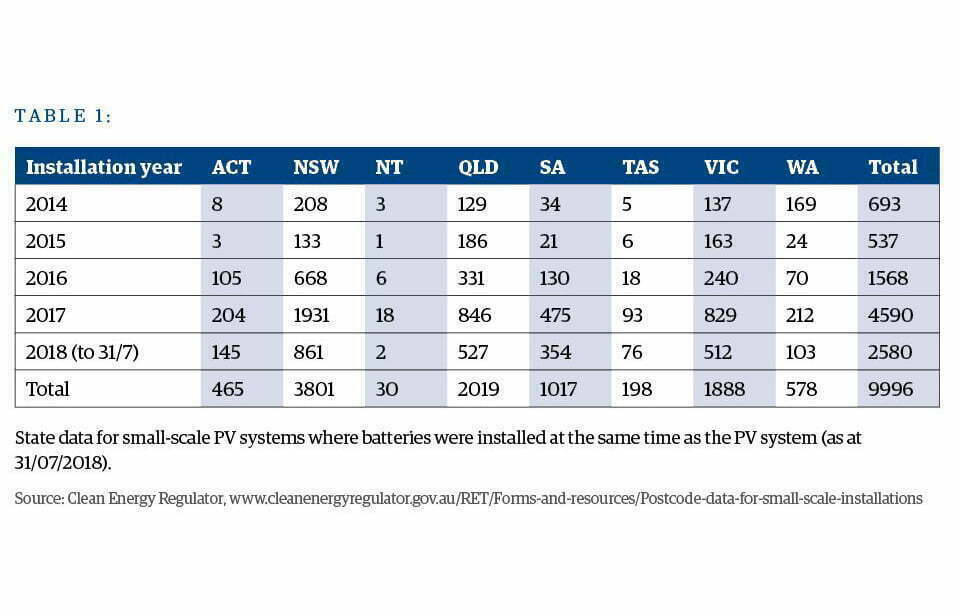
Buying a battery system
The first step to buying a battery system is to see if it is actually worth buying one. Renew’s ‘Household Storage Analysis’ report found that, given the average expected 10-year lifespan of a typical battery system, the economic value of batteries will still be unattractive for many households for the next few years, but this should turn around by 2020 if the projected falls in battery costs do occur. Of course, this depends on how much energy you use, when you use it, your location, as well as the size of your home’s PV system. Renew has also developed a simulation tool called Sunulator to help homeowners determine the economic value of installing solar PV and battery systems. Find the report at renew.org.au/HBA-report and Sunulator at renew.org.au/sunulator.
There are some cases where the economics may stack up or where there are other benefits. Those involved in a virtual power plant (see later in article) may get batteries at a lower cost, plus the coordination of their systems should provide grid benefits. Other potential cases range from needing backup in the case of power outages, to avoiding wasted generation from an export-limited or oversized PV system, to avoiding exacerbating voltage rise issues in the powerlines on your street. Early adopters installing batteries also help technology development. For more on these sorts of pros and cons, see Energy Flows: How green is my solar in Renew 135.
If you have decided that you want a battery system, then you should have some idea of your budget, the size of the system that fits into that budget (don’t forget the not-insignificant installation costs) and the features you would like; for example, do you need backup in the case of a blackout; what monitoring and control options do you want. If you have an existing solar PV system and want the battery to integrate with that, you may be limited to a storage system that is compatible with your existing inverter or other equipment. You may also want to consider whether the battery has capabilities to interface with third-party services like Reposit.
Another thing to consider is the location of the system. Some lithium battery systems will need to be located in a fire-proofed area, most likely outside or in the garage, and lead-acid systems will need to be ventilated to the outdoors. There will be some installation requirements that apply regardless of the system type, including having adequate space for the installation.
The buyers guide in Renew 141 gives you more information about what to look for, and the Clean Energy Council has put together an excellent set of guidelines, along with a downloadable guide; see www.bit.ly/CECSBSF. A good place to start looking at storage systems currently available is the Solar Quotes battery storage comparison table. This lets you compare systems based on price, size and shape, chemistry, rated capacity, compatibility, warranty, lifespan and other specifications. The Australian Renewable Energy Agency (ARENA) has been performing ongoing testing of numerous battery systems of various chemistries, with interesting results (www.batterytestcentre.com.au).
Battery chemistry options
So what makes one battery type better than another for a particular use, and which technology should you be looking at for your energy storage system needs? Let’s look at the current battery chemistry/design options in a bit more detail.
This category covers a number of chemistries, all based on lithium. Lithium batteries have become the most common for on-grid domestic energy storage systems due to their high efficiency, long life, low maintenance and deep-cycle capabilities.
All lithium chemistries have high ‘specific energy’ (the energy stored per unit mass, in watt-hours per kilogram), usually above 100 Wh/kg, making them compact and light. They can be deeply cycled without great reductions in lifespan (this varies depending on the lithium chemistry, cell design etc) and charged and discharged rapidly, with high discharge rates having little effect on capacity. They also have high charge and discharge efficiency, stable output voltage during discharge and are effectively fully sealed, so no off-gassing occurs unless they are heavily overcharged.
They do have some disadvantages, such as higher initial cost compared to lead-acid (although the gap is closing), and the need for accurately controlled charging and over-discharge protection. There is also a higher fire risk for some chemistries. Lithium batteries should be used with a battery management system (BMS) to prevent damage (usually built-in in packaged systems).
Lithium battery recycling facilities are still limited in Australia, so lithium batteries can be more difficult to recycle than lead-acid.
Lithium iron phosphate, commonly known as LiFePO4 or LFP, is perhaps the most popular lithium chemistry, often used for large-scale energy storage system and also in pre-packaged storage systems, such as the Fronius Solar Battery and the BYD B-Box LV. They can have extremely long cycle lifespans (up to 10,000 cycles), especially if not deeply discharged each cycle, and LiFePO4 cells are resistant to fire, even when extremely abused, such as being damaged or short circuited.
Lithium titanate are robust, long-lived lithium batteries; they’ve been around for decades, but are not common in consumer-grade devices. They are normally used in industrial systems where reliability and long lifespan are paramount, especially with high power transfer requirements, as they can charge and discharge at very high rates compared to cells such as LiFePO4. Examples include fast-charge electric buses, grid backup and military applications. A few consumer-grade electric vehicles also use LTO batteries, such as the now-unavailable Honda Fit EV.
Lithium manganese oxide (LiMn2O4, Li2MnO3 or LMO) batteries are mostly used in consumer products, but they have also made their way into energy storage systems such as the Magellan HESS and the Varta Pulse 3. They feature a low internal resistance and so allow fast charging and discharging. The chemistry is often combined with lithium nickel manganese cobalt oxide (NMC, used in the Tesla Powerwall 2, Sonnenschein @ Home Lithium and LG Chem Resu, among others) to improve lifespan and energy density; there are many variations of these chemistries. The resulting high charge and discharge capabilities and good energy densities, plus their good fire resistance, make them popular for power tools and electric vehicles. The materials used in their manufacture are mostly common and cheap; reduced cobalt content reduces the manufacturing cost.
This chemistry was, up until a few years ago, the mainstay of the home energy storage industry. Lead-acid batteries have been in use for over a century and are a tried and proven technology. Although still common in systems that are assembled from individual cells, lead-acid is being replaced by lithium chemistries in on-grid domestic energy storage systems.
Lead-acid batteries are readily available, have reasonable resistance to overcharging, are lower cost than many other technologies and are almost 100% recyclable.
Disadvantages include that they can’t be regularly deep cycled without reducing lifespan and their low energy density makes them heavy for a given battery capacity. In addition, their primary reactive materials are toxic and corrosive, and they can produce explosive hydrogen gas when charging. They shouldn’t be stored partially discharged and must be fully charged regularly to prevent sulphation (where permanent lead sulphate crystals form on the plates). They also suffer from the Peukert effect, where the effective capacity reduces as discharge rate increases.
Flooded-cell lead-acid batteries are generally reliable, but require the highest maintenance of all the lead-acid battery types, including electrolyte level checking and top-up and periodic ‘equalise charging’. They can also produce explosive hydrogen during normal charging cycles, so must be installed in ventilated enclosures.
Sealed lead-acid batteries are effectively sealed, with the electrolyte either contained in a fibreglass separator (absorbent glass mat, or AGM, batteries) or formed into a thick gel with the addition of a silica-based gelling agent (gel cell batteries). They are safer to handle and transport than flooded cell batteries and have little-to-no hydrogen off-gassing during regular charge cycles, no need for equalising charges and no need to check or top up electrolyte. Lifespan depends greatly on the battery design and how they are treated—solar-grade gel cells can easily last as long as equivalent flooded lead-acid cells.
A variation of lead-acid technology is the UltraBattery, which effectively combines a sealed lead-acid battery and carbon electrode ultracapacitor into each cell, enabling the batteries to provide higher currents and withstand deeper discharges than regular lead-acid batteries. They can have a long cycle life, can be stored in a partial state of charge without damage and can have greater charging efficiency.
Flow batteries are quite different from conventional batteries. Instead of solid plates separated by a liquid electrolyte, they use two liquids as the electrodes, separated by a membrane. They have the advantage that capacity can be increased simply by adding larger electrolyte tanks. The only flow battery available for domestic storage applications, the Z-Cell Redflow zinc-bromine battery, comes in 10 kW modules which can be added together to make batteries as large as required.
They have a long cycle life, can be shut down for extended periods at any state of charge, can be cycled to 100% depth of discharge for every cycle, are not a fire risk and can operate in temperatures up to 50 °C.
Their main drawback is the relatively low charge/discharge efficiency and the need for a regular maintenance cycle, during which time the battery is offline. This problem can be mitigated by scheduling the maintenance cycle at the time of least need, such as early in the morning.
What about supercapacitors?
There’s been a lot of talk lately about supercapacitors (or more accurately, ultracapacitors) that can take the place of batteries in energy storage systems. Capacitive storage has a much lower ability to store electrical energy than chemical batteries, as it relies purely on storing electrical charge as an electric potential rather than using chemical reactions. This means that for a given amount of stored energy, capacitors are considerably larger and more expensive than a battery of equivalent capacity.
The main attraction of supercapacitors is their ability to charge and discharge at very high rates, as well as being able to undergo many thousands (even millions) of charge-discharge cycles with minimal loss in capacity.
There have been a few ‘supercapacitor’ systems in recent years that have claimed to have specific energy (energy stored per unit of mass) ratings similar to lead-acid and even lithium batteries. Lead-acid batteries have specific energies of 30 to 40 Wh/kg, with lithium batteries ranging up to around 200 Wh/kg, depending on chemistry. Supercapacitors come in under 10 Wh/kg, with most being around half that.
However, a device called a lithium ion hybrid capacitor (also called a carbon-enhanced battery) combines the features of a battery and a capacitor together. These can have specific energies up to 40 Wh/kg (such as for the Yunasko lithium ion capacitor) while being capable of the high charge and discharge rates typical of capacitors. It should be noted that these are effectively still batteries as the bulk of the energy storage is done chemically, and calling them capacitors is not strictly accurate.
True capacitor-only based energy storage systems do not currently have the energy storage capacity per unit volume or mass of any modern chemical batteries, and are considerably more expensive per unit of energy stored. No true capacitor currently manufactured has capacities capable of replacing a battery-based energy storage system of comparative size, weight or price.
Current claims of capacitors with similar specific energies to chemical batteries could be misleading and further scrutiny is advised—these systems could be mislabelled lithium battery systems using lithium titanate cells (for systems rated above around 40 Wh/kg) or lithium enhanced capacitors (hybrid capacitors).
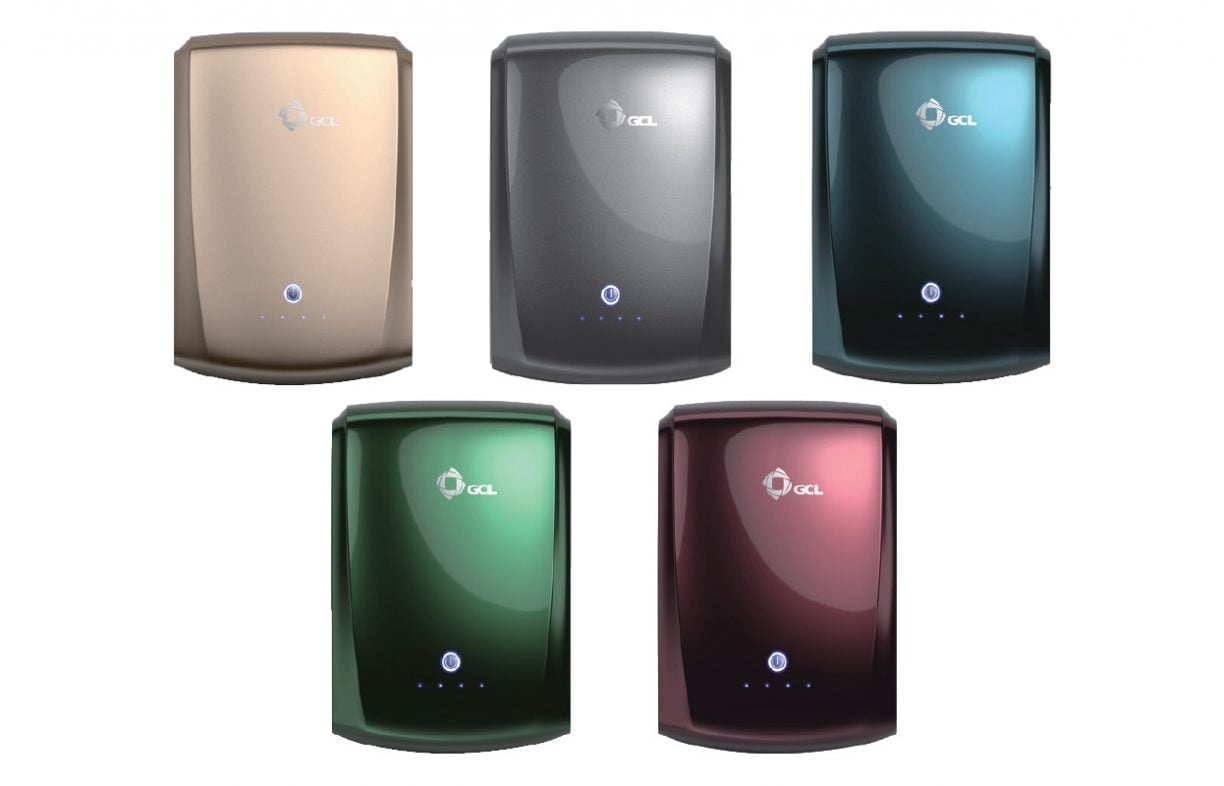
Non-battery storage
While a battery allows you to store your solar energy for use at a later time, if you can shift heavier loads to the middle of the day you can make much better use of the energy you generate without the need for a battery.
A good example of this is to use a heat pump hot water system (or even a resistive element hot water system, if you have a lot of excess solar), and use a timer to run it in the middle of the day. This allows the hot water system to store the excess solar energy in the form of hot water—effectively making your water heater a form of battery.
The same applies to other loads, such as a hydronic heating system, which can store solar heat in a large water tank for use in the evening when you get home from work, or you can simply shift other loads such as washing machine and dishwasher use to the middle of the day. While the latter isn’t a form of energy storage, it does make effective use of solar electricity at the time of generation, reducing the need for storage. The availability of in-built timers in many appliances makes shifting runtimes easy nowadays, without the need for additional timers.
Large-scale storage
It’s not just about domestic-scale systems; there’s been a lot happening in the large-scale storage sector. Much more is needed before we get to 100% renewables, but the direction is positive.
Pumped hydro
Storing large quantities of electrical energy for the grid has traditionally been done using systems such as pumped hydro, where water is pumped to a high reservoir using excess grid power, allowing it to flow back to a lower reservoir via a hydro turbine at times of greater demand. Such systems are well understood and there are numerous pumped hydro systems around the world, with several new proposals for Australia being tabled in recent months. These include Snowy Hydro 2, which involves linking the two existing Snowy scheme reservoirs through underground tunnels and an underground power station with pumping capabilities (www.bit.ly/2KARDX6), and up to 14 potential sites in Tasmania (www.bit.ly/2KCgFFk).
ANU’s Atlas of pumped hydro energy storage identified around 22,000 potential pumped hydro sites in Australia. Although their report noted that the commercial feasibility of developing them is unknown, it also estimated that the best 20 sites could provide all the grid storage Australia needs to move to 100 % renewable energy.
Big batteries
The most well-known of the ‘big batteries’ is the 100 MW Tesla lithium ion storage system installed in South Australia and known as the Hornsdale Power Reserve. It can charge at 80 MW and discharge at 100 MW, and has a capacity of 129 MWh, so it can provide full output for more than an hour. It has already proven its ability to respond to grid demand far faster than any other generation source; when almost 700 MW of generation tripped out last summer, the Tesla battery started feeding the grid to help make up the difference in just a few milliseconds. The grid operators were not aware of the loss of capacity for some time, such was the reaction speed of the battery.
Other large batteries are planned or being constructed, including two in Victoria: a 25 MW/50 MWh battery to be built by Tesla at the 60 MW Gannawarra solar farm near Kerang and a 30 MW/30 MWh battery to be built by Fluence at Ballarat (see www.bit.ly/2MsMnGN).
Virtual power plants
Large-scale storage doesn’t have to be centralised into one location. Decentralised (distributed) generation can be as or more effective in controlling grid voltages, and the distributed aspect of such systems means less strain on single areas of the grid. The most promising form of distributed generation is what’s known as a virtual power plant, or VPP, which involves combining many small solar/battery systems into a single large power source.
With the advent of smart, remotely controlled domestic-scale batteries, it has become possible for energy companies to remotely sync up hundreds or even thousands of their customers’ batteries to provide power to the grid when demand is highest and absorb grid energy when there is excess. This sort of large-scale system can provide grid stability, in both voltage and frequency, by balancing loads and generation, even from variable generation from commercial solar and wind farms.
The biggest virtual power plant in the world was planned for South Australia, with the ultimate goal of installing domestic batteries in 50,000 Housing SA and low-income households. Each battery was designed to produce up to 5 kW, resulting in a VPP able to provide up to 250 MW when required. A change of state government has seen that plan evolve. So far a much smaller VPP has been installed, consisting of 100 Tesla Powerwall 2s in public housing, with the plan to increase that by another 1000 units (www.bit.ly/2KDuFyF). The new government instead planned to give grants for battery storage to around 40,000 homes, but it’s now looking possible that both projects may go ahead, resulting in around 90,000 homes receiving energy storage and PV systems. If this happens, it will form the largest VPP in the world by far (www.bit.ly/2OQd3Tj). Interestingly, AGL has also announced their own separate VPP program for Adelaide households.
Another VPP involves a collaboration between energy retailer Powershop and Reposit, whereby anyone with a Reposit-equipped battery storage system living in NSW, Victoria or Queensland can sign up for the Grid Impact program to become part of a distributed virtual power plant and get paid accordingly (www.bit.ly/2M4iyQB).
In a different type of VPP, Energy Queensland has partnered with GreenSync to create Australia’s largest virtual power plant using GreenSync’s peak response units at large energy users and industrial sites. While not actual energy storage, they can have the same effect of stabilising the grid by controlling when large energy consuming systems such as HVAC units can operate (www.bit.ly/2P20pAS).
Batteries in housing developments
It’s not just home owners who are looking at domestic energy storage—a number of housing estate developers have been installing solar and storage systems on their new housing estates, adding value to the homes by promising lower energy bills.
A 460-home project at Lyndhurst, Victoria, by Villawood Properties, in conjunction with South East Water, offers buyers of the ‘Aquarevo’ homes the option of 5 kW of rooftop solar, plus battery storage provided by Sonnen (www.bit.ly/2vTnVr2).
White Gum Valley, near Fremantle, WA, is an eight-dwelling residential complex that includes units and townhouses that are part of a microgrid. Solar PV panels on rooftops provide electricity to households, with excess solar stored in the strata-owned battery. When the sun isn’t shining, the households source their power from the battery, with the grid acting as a backup when that is depleted (www.bit.ly/2nnYxWe).
The Huntlee Housing Development is a planned off-grid development in the Hunter Valley, NSW. An assessment found that it would be cheaper to build an independent microgrid for the 7500 home development rather than connecting it to the main grid. The development will include 40 MW of PV generation, 30 MW of cogeneration and 40 MWh of energy storage. Construction has already started on the new township, which will be completed in four stages, to be finished by 2045 (www.bit.ly/2MbylfP).
Home builder Metricon, in partnership with solar installer CSR Bradford, is offering NSW and Queensland customers who choose its ‘Designer by Metricon’ range to also have the option to include a Solar ChargePack, which includes 5.4 kW of rooftop solar and the 13.5 kWh Tesla Powerwall 2.
These are just a few examples where solar PV and battery storage are being offered as standard or as an option with new homes, with dozens of home builders around the country adding renewable energy system options to their home designs.
While most batteries use either solid electrodes and liquid electrolyte, or liquid electrodes with a solid separator (as used in flow batteries), there is one battery type that has, until now, not been developed commercially—a completely liquid metal battery.
The liquid metal battery from Ambri uses two metals of different densities, one heavy, one light, separated by a molten salt with a density between that of the two metals. The different layers stay separate due to immiscibility (the inability to mix); there are no membranes or separators required.
Ambri originally used magnesium as the negative electrode and antimony as the positive electrode. As the cell discharges, electrons flow from the magnesium layer, and magnesium ions migrate through the salt layer to form a magnesium-antimony alloy. When recharging, the magnesium is stripped from the alloy and reforms the top magnesium layer.
Testing on this self-heating cell chemistry found almost no capacity reduction after 2000 charge/discharge cycles, with an expected lifespan over 15 years and tens of thousands of cycles, and the cells have proved to be easily scalable to 1 kWh and larger per cell. However, Ambri is now commercialising a different (proprietary) chemistry with a lower operating temperature, higher voltage and lower cost, which should result in batteries with a better cost per unit of storage.
Just when the Ambri battery will hit the market is unknown, but it should find uses in grid-level storage and even possibly domestic storage systems—if the price is right.
Other flow batteries
The Redflow battery is not the only flow battery around. Vanadium redox flow batteries have been in development in Australia and overseas for many years, with a number of grid-scale installations completed. Vsun Energy has installations in Australia and quite a few overseas, including in the USA, Germany, Japan, China, Indonesia, India, the UK, Italy and The Netherlands.
Another flow battery chemistry is zinc redox, and ViZn Energy Systems has recently secured a new round of funding after suspending operations earlier this year. In December 2017 they secured a contract to install a 400 kW, three-hour zinc flow battery at CMI’s headquarters in Seraing, Belgium, to be integrated with 2 MW of solar PV.
An interesting recent development comes from Stanford University, where they have come up with the design for a liquid metal flow battery. The negative electrode is made of an alloy of sodium and potassium which is liquid at room temperature. The separator, or membrane, is made of a ceramic consisting of potassium and aluminium oxide. For the positive side of the battery, the researchers experimented with four different liquids, but the water-based liquids quickly degraded the membrane. They are now looking for a non-water-based option to improve the battery’s performance—probably a good idea, given the explosive reactions that occur when sodium and potassium come into contact with water! www.stanford.io/2MaS4gr
One of the biggest issues with lithium batteries is the use of cobalt in many lithium chemistries. Cobalt is expensive, with prices tripling in the last couple of years, and more than half of the world’s cobalt coming from the politically unstable Democratic Republic of the Congo, where miners usually face poor working conditions and are often exploited.
Recognising these and other issues, a number of manufacturers are working to reduce or eliminate cobalt from their batteries altogether. These include Panasonic, which aims to get the cobalt out of their nickel-cobalt-aluminium batteries (used in Tesla’s electric vehicles); they have already reduced the amount of cobalt required per vehicle by almost 60% in the last six years (www.bit.ly/2LZhzBm). According to Tesla CEO Elon Musk, the ultimate goal is for Tesla vehicles to use no cobalt at all in their battery packs.
New York startup Conamix is aiming to develop their own cobalt-free electrode materials that can be used in existing battery manufacturing. Conamix has already attracted investment from the ‘deep diligence’ investment company +Volta Energy Technologies, so they must be onto something with their technologies.
BYD in China is also reducing the amount of cobalt in its batteries, to a nickel-cobalt-manganese ratio of 8:1:1 (current batteries generally use a 5:2:3 or 6:2:2 ratio), and this ratio is expected to account for around 57% of all electric vehicle batteries by 2030, according to Bloomberg (bloom.bg/2ndg5Et).
In the last battery technology update in Renew 137 we looked at a number of newer technologies. But have they been successful, and where are they now? Will they change the storage industry, or were they just pipe dreams?
The first is the Saltwater batteries from Aquion Energy. Unfortunately, Aquion went into receivership not long after issue 137 came out, but unlike most companies that fail, they were rebooted with new investment funds and are in the process of redesigning and improving their batteries—although they seem to have been doing this for the last two years now. You can buy Aquion batteries from a few suppliers that have stock of the old batteries, but the new restructured company is not supporting warranties for those batteries. Whether we will see the new and improved Aquion batteries and whether they will address the issues of low power output and low charge cycle efficiency remain to be seen.
While Aquion’s fortunes have been a tad variable, one Australian company has done a lot better. Redflow Limited makes zinc-bromine flow batteries in commercial and domestic designs, all based on versions of the same 10 kWh flow battery module. While they had a slow start, installations have been progressing, with numerous domestic and a small number of commercial installations so far, including for use in a digital TV network in Fiji, a factory in South Africa and a number of domestic and rural installations around Australia. Note that Redflow uses Thailand as its manufacturing base, rather than Australia.
Flywheel batteries
Flywheels were once touted as the solution to rapid response energy storage for on-grid applications. While they haven’t been as successful as manufacturers would have liked, there are some flywheel energy storage systems available, such as the Amber Kinetics M32 (available in Australia through Greenfields Energy in Adelaide), with a rated output of 8 kW and storage of 32 kWh. SA Water will be using 128 kW of M32 flywheel batteries at the Hope Valley reservoir this year. According to SA Water, the project is on schedule for installation in coming months.
SolidEnergy
This MIT spinoff battery manufacturer promises the lightest, most energy-dense lithium batteries in the world with their redesigned fire-resistant lithium metal cells. So far they are only producing their Hermes cells at around 5000 units per month, so availability is limited to say the least. However, at a specific energy of around 450 Wh/kg and energy density of around 870 Wh/L, they are the most energy-dense cells we have seen. Let’s hope they follow through with their other cell designs in the next few years—they could double the range of the average EV, if the prices are low enough.
Concepts that failed
US startup LightSail planned to use their own compressor and carbon-fibre storage tank designs to provide above-ground large-scale compressed air energy storage. However, they failed to address the problems that previous companies such as SustainX had run up against, including the low energy efficiency of compressed air storage due to high thermal losses (air gets hot when you compress it), and ceased operations in December 2017 after burning through a cool US$80m.
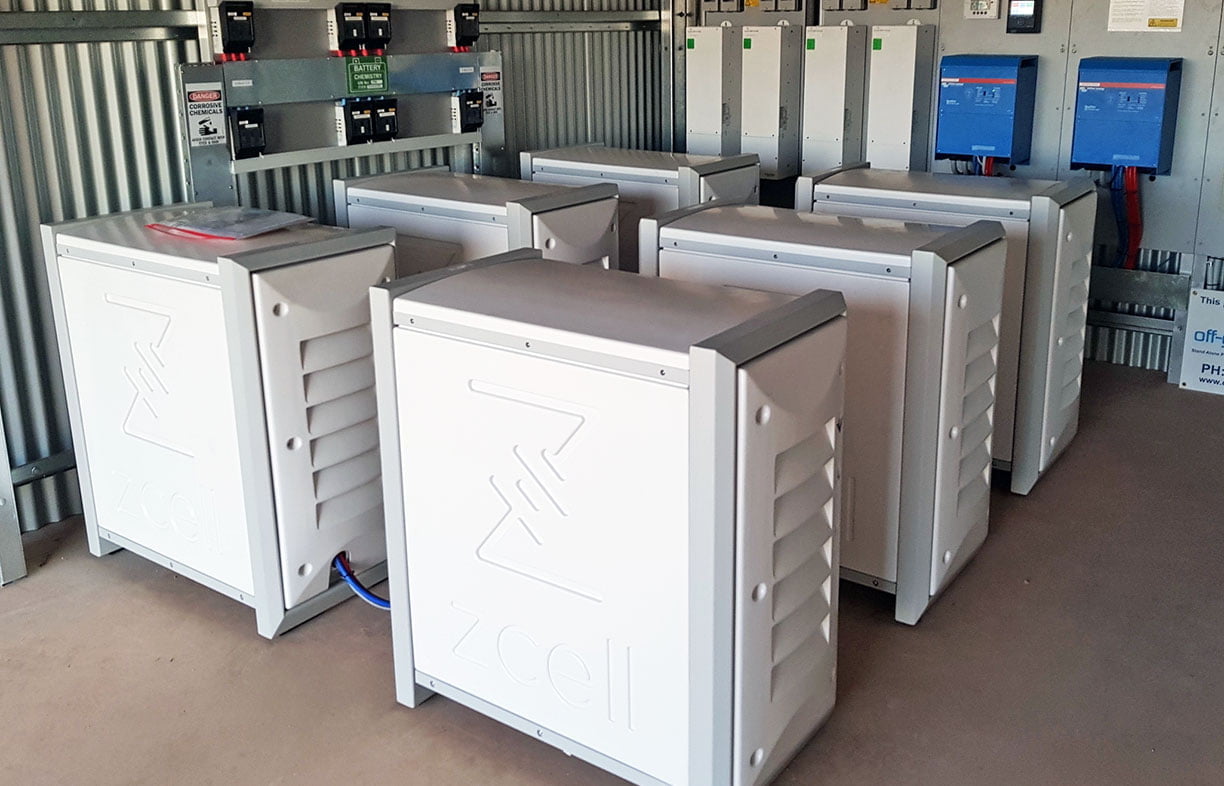
As battery manufacture ramps up, the need for greater quantities of raw materials is steadily increasing. Lithium batteries are normally made from new (virgin) materials, but there is movement in the recycling of existing lithium batteries to recover the raw materials they contain for reuse in new batteries.
Traditionally, the recovery methods have been expensive and energy-intensive, hampering the lithium battery recycling industry. However, some interesting work is being done in this area, with one university team taking an old-school approach.
Michigan Technological University researchers are using century-old mining techniques to recycle lithium-ion batteries at low cost. Research leader Lei Pan, an assistant professor of chemical engineering, also has a graduate degree in mining engineering. He thought that methods that are normally used to separate metals from ore could be applied to lithium battery recycling, and suggested to his students to look at this further.
The team used these techniques, such as simple gravity separation and froth flotation, to separate everything in the battery, including the casing, metal foils, the anode and cathode, and the lithium-metal oxide, with considerable success. The end result was a range of materials, including graphite, lithium and cobalt, which were cheaper to produce than virgin materials, but just as suitable for new battery manufacturing. The processes used are the cheapest and most energy-efficient currently available, and the processing equipment is readily available. www.bit.ly/2AKWUvs
Closer to home, battery recycling is starting to ramp up. Envirostream Australia is a company created in 2017 by PF Metals to tackle the increasing waste problem of discarded batteries of all types. The factory takes batteries from EVs, phones and computers, power tools, energy storage systems, almost anything that uses a battery, and can deal with lithium, nickel metal hydride and nickel cadmium, alkaline single use and lead-acid battery types. The batteries are sorted into type and then processed, with up to 80 tonnes of batteries per month being recycled into their base elements for reuse. All batteries are processed in Victoria at the New Gisborne plant, with up to 95% of the materials in the batteries being recovered. Battery drop-off locations can be found on the Envirostream website.
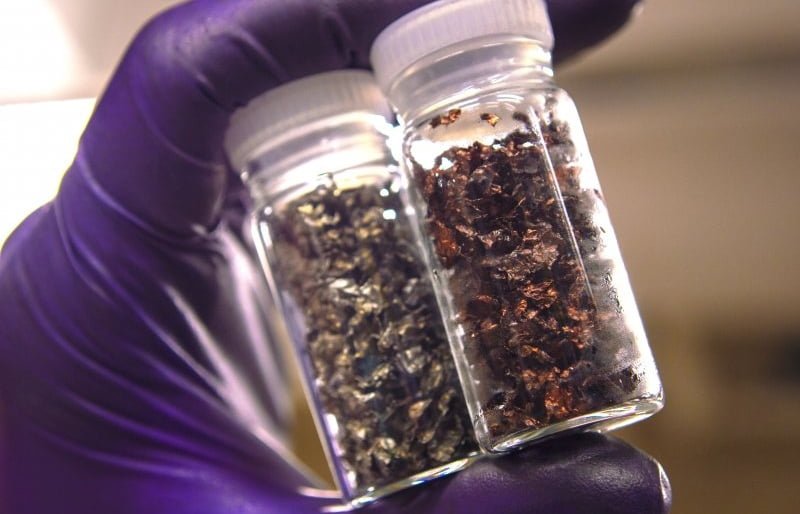
- ‘The lowdown on battery technology’ in Renew 137
- Energy Storage Buyers Guide in Renew 141
- Clean Energy Council storage system FAQ and guide
- Solar Quotes battery storage comparison table
- batteryuniversity.com
Related articles
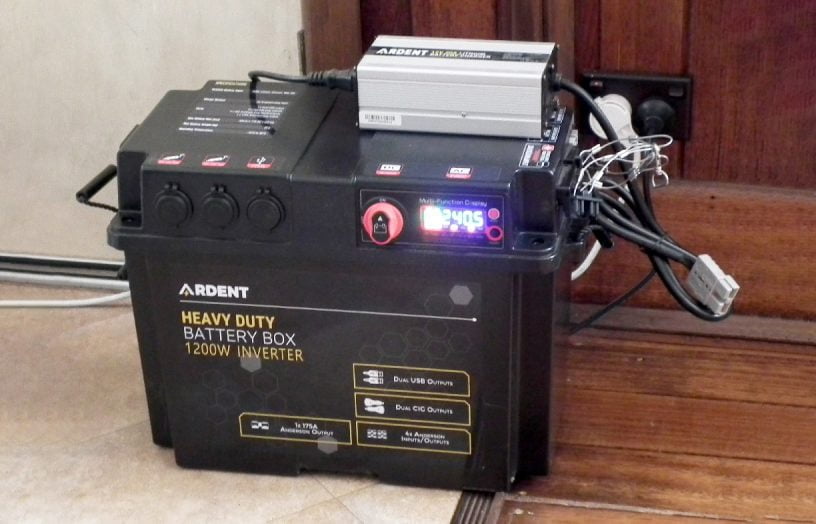 DIY
DIY
Deleting the genset
If you have the need for the occasional use of a generator, then why not replace it with a much cleaner battery backup system instead? Lance Turner explains how.
Read more Renewable grid
Renewable grid
Is a floating solar boom about to begin?
Rob McCann investigates the world of floating solar energy systems.
Read more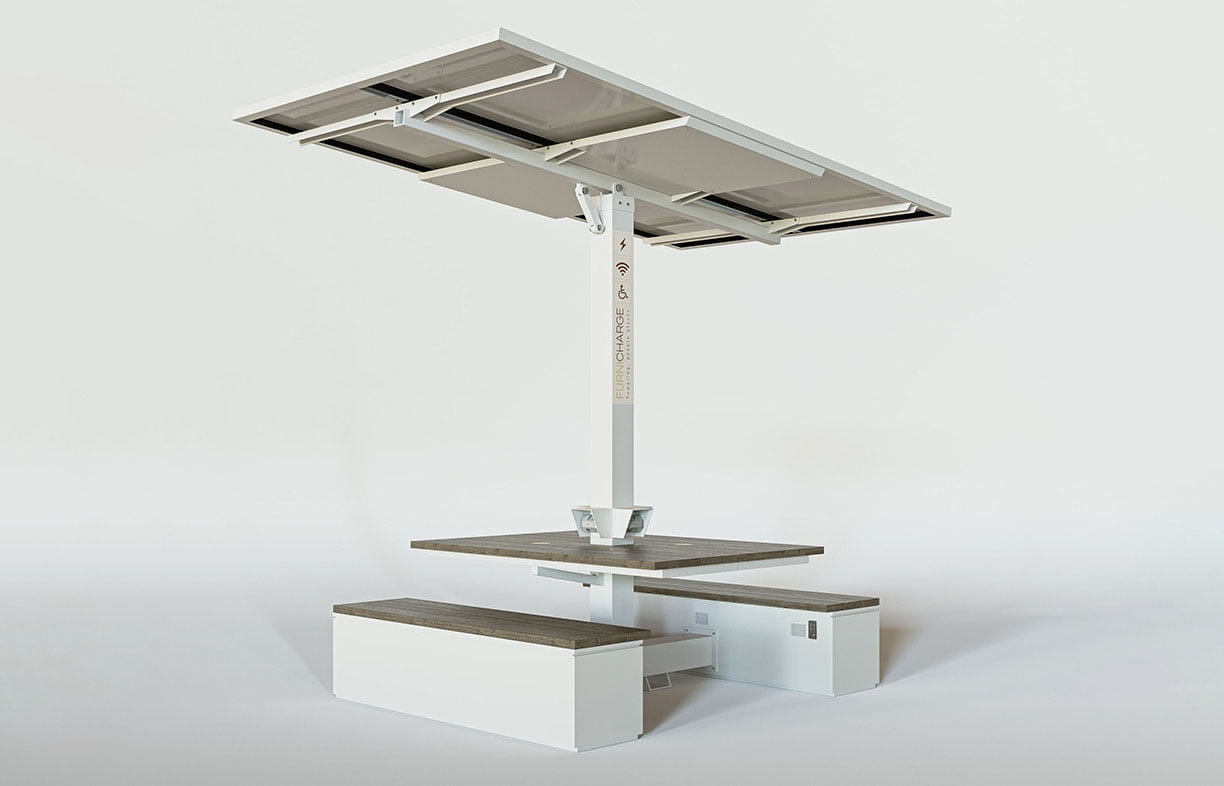 Products
Products
Product profile: Portable solar recharge hubs
Providing device recharging for events or outdoor areas with no access to electricity can be difficult, but the Furnicharge Freedom Hub makes it simple.
Read more

